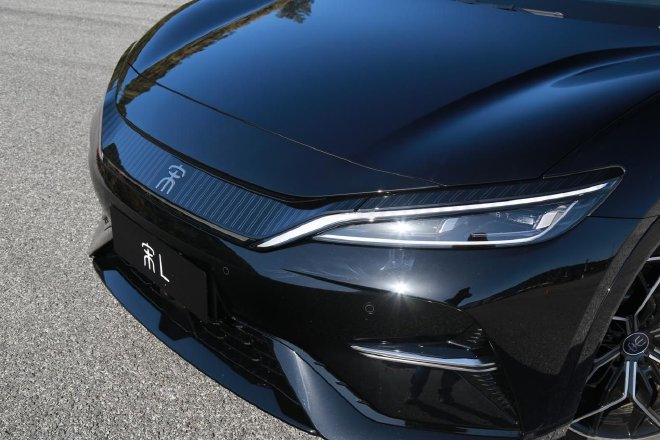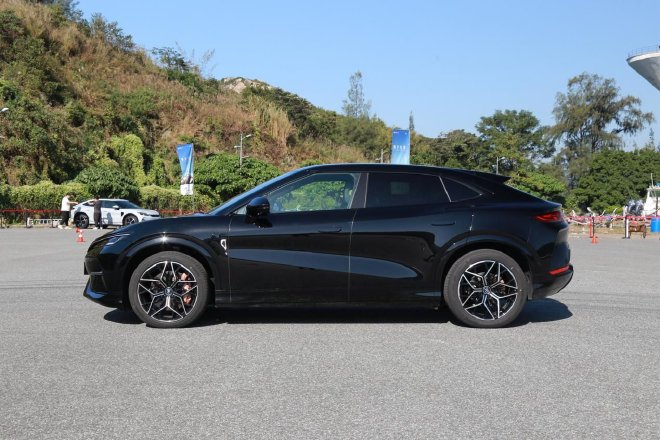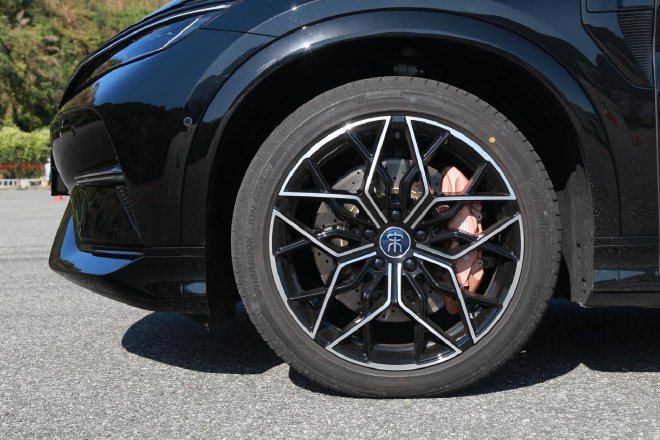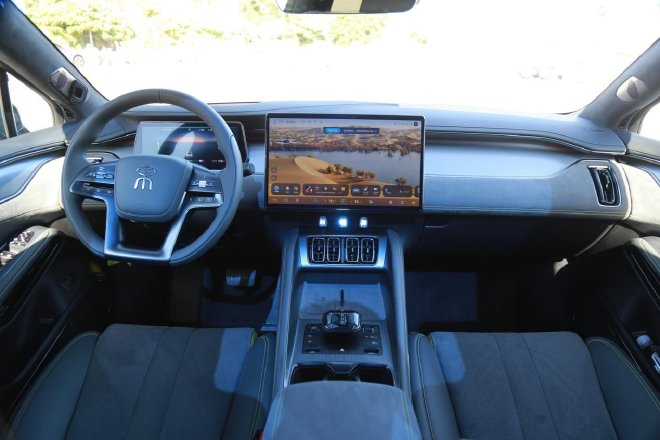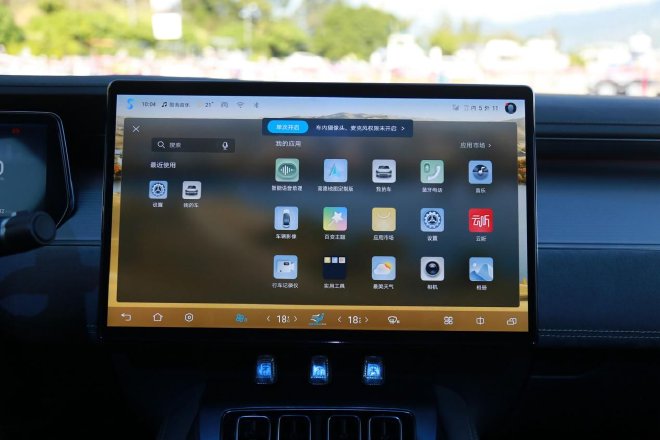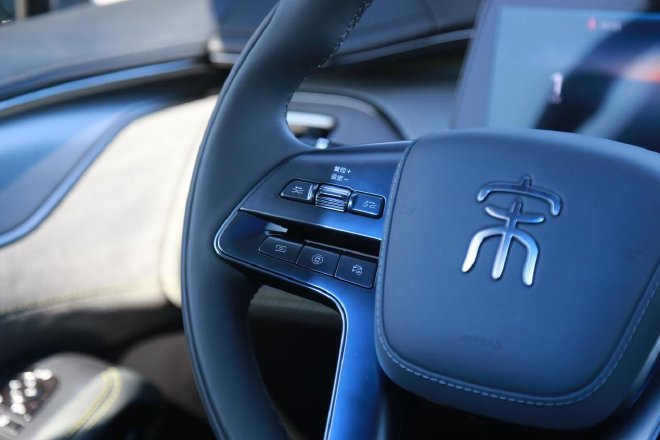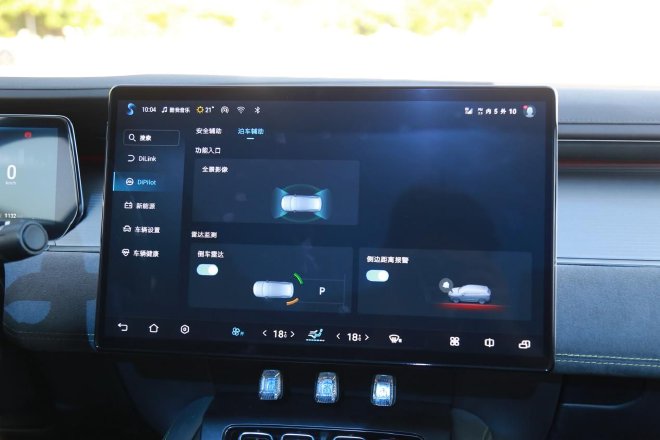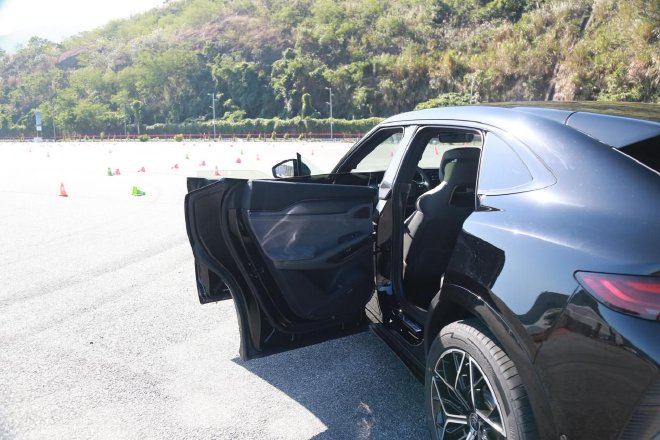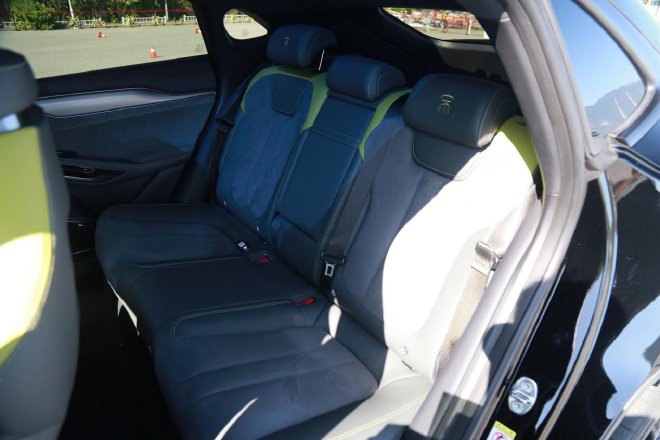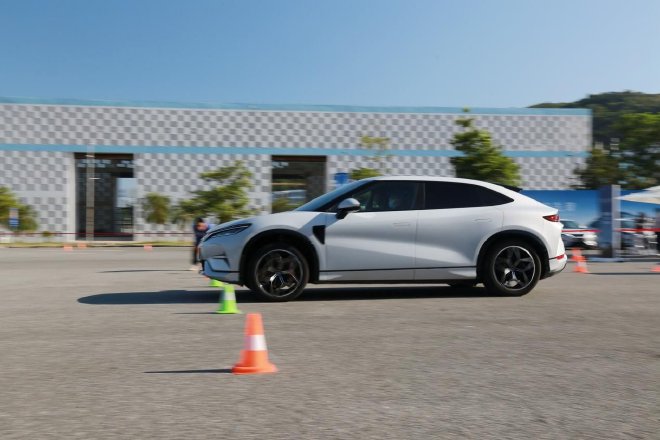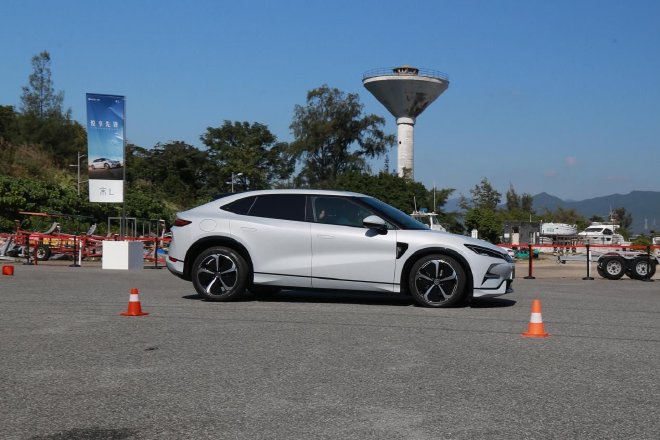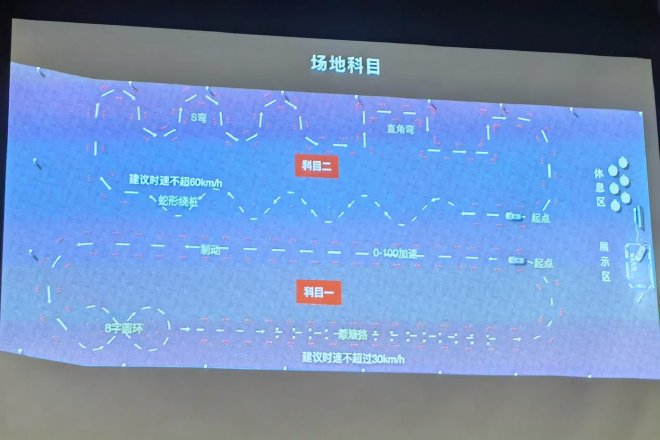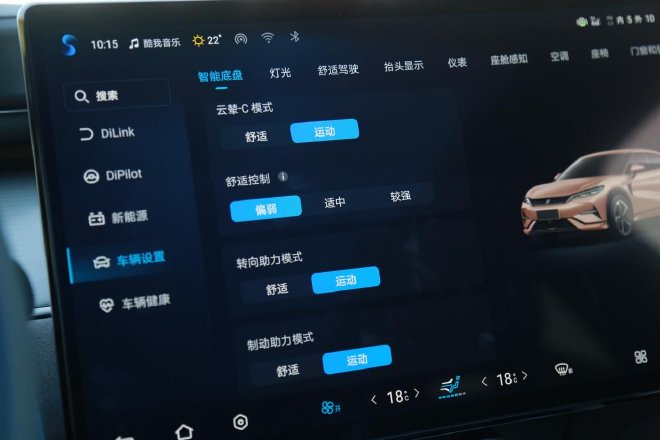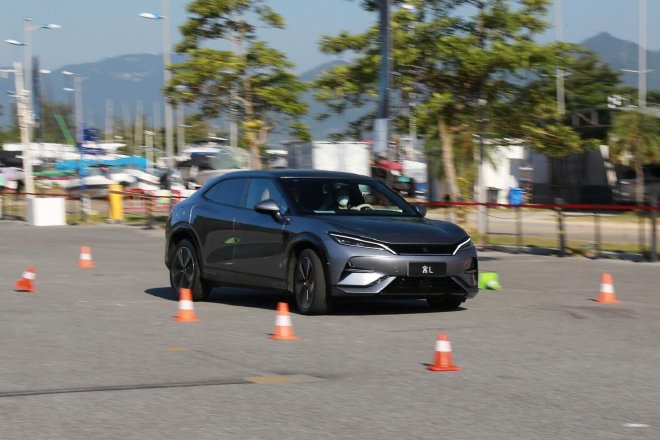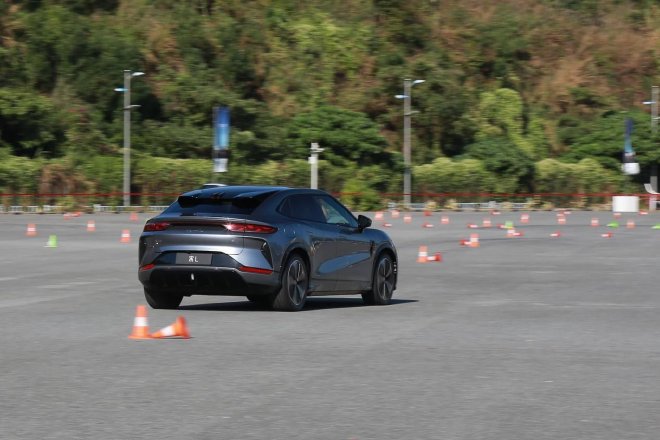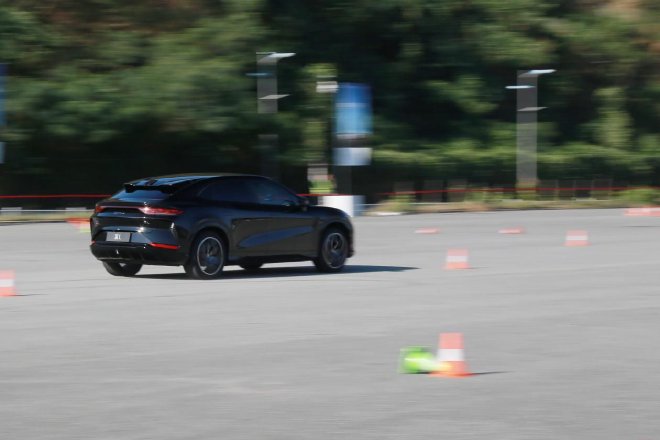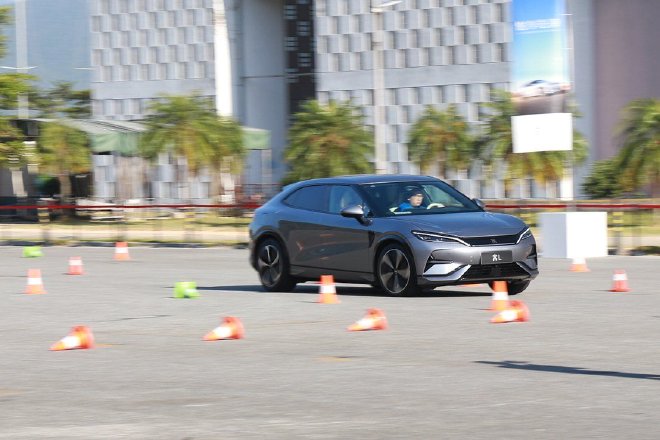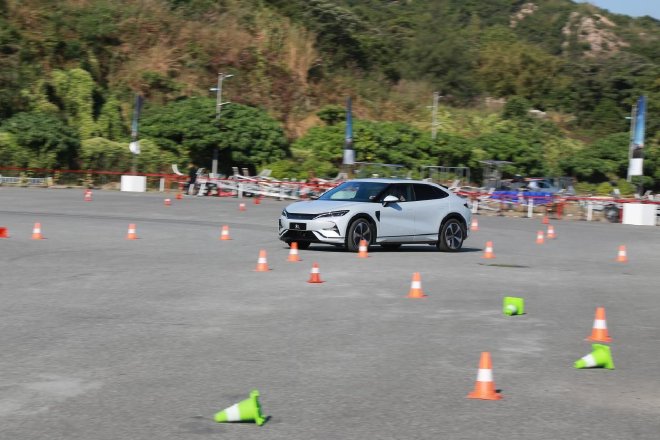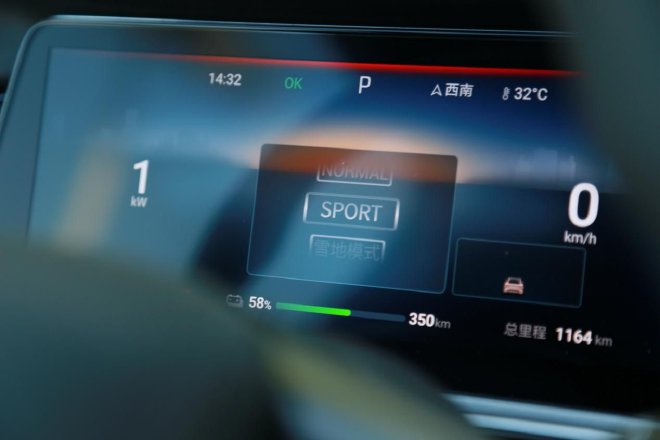. In the BYD brand’s Wangchao series, the Song has always been a very stable position. From the early Song, to the later Song MAX, and now the Song Plus and Song Pro, regardless of any changes in the body size of the models, one thing that will never change is its positioning, which has always been very consumer-friendly and neutral in style. It is not content to be lonely, and at the same time, it does not have too many edges. In a sense, it is also a very moderate model series under the BYD brand. However, all of this impression changed after the birth of the Song L. This car, officially classified by BYD as a “B-class pioneer hunting SUV,” seems to be born to break the family tradition, just like its “pioneer” definition. So, what is its strength, and can it live up to its ambition? After the appearance appreciation, interior release, and the start of pre-sales, the Song L finally arrived late for its first dynamic test drive. So, in this test drive, I will tell you the answer from the dynamic part. It is important to note that the test drive car is still in the engineering sample state, and the calibration of hardware and software will be different from the production car later. Our test drive experience this time is also only for the current state of the vehicle. We have already launched a poll on Weibo for #taking questions to test drive#. The three most concerning questions from netizens about the Song L are “How is the configuration of intelligent equipment,” “How is the performance of the power system, is it strong enough,” and “Considering the current pre-sale price, is the Song L worth choosing?” Let’s briefly answer these questions first. The Song L has three major intelligent systems: the customized DiLink intelligent networking system, the Qualcomm Snapdragon 6nm process chip, with a score of over 550,000; the DiPilot intelligent driving assistance system, featuring a safe, efficient, and easy-to-use design with 24 sensors and over 30 auxiliary functions; and the full-scene digital key, which in addition to NFC digital key and Bluetooth key, also adds a UWB digital key. Overall, its intelligent equipment style is the Song family’s people-friendly style, focusing on practicality rather than flashy technology. There are two versions to choose from, a single motor and a dual motor. The four-wheel drive version we test drove is equipped with a front asynchronous and rear synchronous motor, with a combined maximum power of 380kW. With such parameters, the explosive power is self-evident, and the electric four-wheel drive brought by the dual motor can also coordinate the power of all four wheels very well. Overall, whether on the track at the Golden Card, or cruising and overtaking on open roads, the smoothness and obedience of the power are quite good. The pre-sale price of 220,000-280,000 yuan (39190$), is it expensive? If you only look at the pre-sale price, then indeed, it is undoubtedly the price ceiling model of the Song family. Even the flagship price of 209,800 yuan (29360$) for the Song PLUS cannot touch the threshold of the Song L pre-sale price. However, if you compare it to similarly configured standard mid-size SUVs, such as the Tesla Model Y, NIO ES6, and WENJIE M5, you will find that its pre-sale price is actually quite reasonable. Features such as automatic spoiler, frameless doors, and front narrow and rear wide tires are things that BYD did not have before. Let’s assume, if its name was not Song, but used a higher model positioning sequence, would you still feel that it’s “just okay”? A brief review of the appearance section
It is a model born on the BYD e3.0 platform, the overall style still continues the dragon face design language of the Dynasty Network, but with more evolution. BYD named the exterior design of the Song L as “Pioneer Dragon Face”, defining it as a “B-class pioneer hunting SUV”. Standing in front of this sporty car, you will feel that it is completely different from any other BYD car now.
The front of the new car features the typical X-shaped front face commonly used in sports cars, with a smoked black decorative panel at the center grille and dense vertical bars as the background. The middle is embedded with the “Song” brand logo, and the headlights are very slender with long strip chrome decorations inside. For a sporty feel, the three-section front bumper has ventilation openings on both sides, with chrome decorations accentuating the details and incorporating the design concept of the dragon’s beard.
The side of the body is outlined with multiple powerful “dragon” waistlines, the window shape is relatively flat, the ground clearance of the car body is small, and the shape well interprets what a “hunting SUV” is. In terms of dimensions, the new car’s three dimensions are 4840/1950/1560mm, with a wheelbase of 2930mm, positioning it as a five-seat mid-size SUV, with all dimensions being quite standard except for the height.
The rear end is the best visual feature, the roof line smoothly transitions from the A-pillar to the sloping C-pillar, and the entire D-pillar has a very inclined shape. In addition, the top rear wing, the adaptive rear wing at the end, the three-dimensional decoration at the bumper, and the bottom diffuser continue to enhance the sporty atmosphere of the rear of the car. The tail lights adopt the evolved family-style “flowing light” design, similar to the Han, and the visual effect is even better. In TSN style: The rear end is where the best visual features are, with the roof line smoothly transitioning from the A-pillar to the sloping C-pillar, and the entire D-pillar having a very inclined shape. Additionally, the top rear wing, the adaptive rear wing at the end, the three-dimensional decoration at the bumper, and the bottom diffuser all continue to enhance the sporty atmosphere of the rear of the car. The tail lights adopt the evolved family-style “flowing light” design, similar to the Han, and the visual effect is even better.
The Song L, a positioning hunting SUV, is equipped with rear-wheel drive or four-wheel drive. It is a pure electric SUV that pursues driving performance, as seen from the narrow front and wide rear tires. In addition, it is equipped with BYD’s self-developed brake calipers and brake discs. In terms of specifications, the front tire size is 245/45R20, and the rear tire size is 265/45R20, both from the Hankook iON evo SUV, a high-performance new energy tire designed specifically for SUVs.
The cabin design of the Song L is quite revolutionary, officially referred to as “dynamic intersecting aesthetics.” The central control area features a symmetrical double-layer suspended T-shaped design, equipped with a 10.25-inch full LCD instrument panel screen, and a rotatable adaptive suspended PAD in the middle. The BYD Heart with crystal cutting craftsmanship is more exquisite. Some of the human-machine engineering designs in the cabin are very good, the only possible drawback being the relatively large size of the four-spoke D-shaped steering wheel.
In the “DiLink Smart Cabin”, the cabin continues to be equipped with BYD’s signature 15.6-inch adaptive floating PAD. In terms of hardware, it is equipped with BYD and Qualcomm’s custom high-performance DiLink smart networking system, with a 6-nanometer process and support for 5G.
Its intelligent assisted driving is not flashy, pursuing practicality. The BYD DiPilot intelligent driving assistance system is equipped with 24 sensors and has more than 30 auxiliary functions, such as high-speed assistance, intelligent navigation, automatic parking, and fatigue monitoring reminders, covering mainstream driving scenarios. However, because the test drive car is still in the engineering car software has not been debugged, we will try it later.
The Song L is equipped with frameless doors and electronic door handles for the first time. The driver’s seat features an ergonomic design with medium firmness, providing both comfort and support. The front seats are adjustable at multiple angles and also offer massage, leg support, ventilation, and heating functions.
The rear seats maintain the same sporty style as the front seats, with comfort as the core. The seat cushion filling balances comfort and support. Thanks to the CTB battery integration technology, the horizontal and legroom space is good, even though the hip point is slightly higher than a regular fuel car, there is no feeling of oppression in the headroom. Now, it’s time to hit the road. Driving experience on the track and open road The Song L offers three power options: front asynchronous motor and rear permanent magnet synchronous motor. The 550km version features a single rear-drive motor with a maximum power of 150kW, 0-100km/h acceleration in 8.6 seconds, and a 71.8kWh lithium iron phosphate battery for a range of 550km. The 662km version has a maximum power of 230kW, 0-100km/h acceleration in 6.9 seconds, an 87.04kWh battery for a range of 662km. The four-wheel drive version we tested has dual motors with a combined power of 380kW, 0-100km/h acceleration in 4.3 seconds, and an 87.04kWh battery for a range of 602km. Acceleration experience per 100 kilometers It has a sharp and sporty style, essentially a tough character inside and out. As a sports car, it has excessive horsepower, and in terms of coordination, in addition to the iTAC intelligent torque control system, the front and rear dual motors give it an electric four-wheel drive system. The distribution of driving force is completely adjusted by the computer, which will determine the power output needed or road conditions, as demonstrated in straight-line acceleration.
BYD has truly mastered the three-electric system as a brand. Creating a fierce personality is actually quite easy. The biggest perception during acceleration is that it is really more aggressive than previous BYD models. As long as you step on the gas pedal, you can achieve the most efficient start. At this moment, the overall power output of the vehicle is quite fierce, but the tires will not have obvious slippage to waste power. In a very short time, the front of the car does not significantly rise, and the car will push you out from the starting line.
Sitting in the car, the driver’s actual experience is more intense than the numbers. The motor has strong explosive power at the front end, and you can feel the motor’s output very lively instantly upon starting. As the speed increases, the blood in the driver’s head starts to rush to the back of the head, and the constantly rising power does not allow the G value to decrease significantly. Reaching top speed gives a full push-back feeling. Under the condition of three people riding with the air conditioning on at a temperature of 23 degrees Celsius, the acceleration to 100 kilometers per hour is still achieved in 4.6 seconds.
The brake pedal has a linear feel throughout, but the front end is slightly soft, which is a typical characteristic of Japanese car tuning. However, the braking force output is uniform throughout, and the braking force is also quite linear. The ABS works very actively, accurately grasping the vehicle’s final braking point, and the pitching and yaw control is quite good, with no significant front-end dive. Overall, the experience on the test track is…
The test project made up of piles of barrels includes right-angle turns, which not only test the power but also challenge the suspension and steering skills.
Song L uses a front double wishbone + rear multi-link suspension system, with a large number of aluminum components in the chassis. The four-wheel drive model is equipped with the Yunni-C suspension system, which adjusts damping by controlling the electromagnetic valve of the shock absorber, achieving infinite adaptive damping adjustment under the processing of the Yunni smart computing center. It can also be manually adjusted, and in our experience, we manually selected its mode to be sporty.
The ground clearance of the Song L in the SUV is relatively low, because of the CTB body battery integration technology, its center of gravity will also be lower, and the advantage of body stability in reflecting emergency avoidance ability will be magnified in the moose test. The better suspension and calibration logic also play a role in enhancing the control ability of the body dynamics.
The vehicle stability program logic is more inclined to make maximum efforts to ensure your safety, rather than gracefully taking a curve, which is an absolute advantage when the car is actually on the road. When approaching a very narrow right-angle turn at close to 60 kilometers per hour, the degree of intervention of the car’s ESP is very obvious, and it will make every effort to apply braking to the inner rear wheel to correct the body posture and prevent the car from losing control.
The electronic steering of the car is not very strong, and the style is still relatively neutral. Throughout the entire segment, it presents a balanced state that is more suitable for everyday use. No matter which steering mode you switch to, it only makes very subtle adjustments to the return-to-center damping, and there is no change in directional stability and steering ratio. This is probably also related to its relatively large steering wheel spokes. However, it is always an SUV, and this setting emphasizes the ability to quickly adapt to it from the moment you start driving.
The eight-character bend and snake-shaped around the pile are obstacles made with pile buckets in a small area. Due to the space limitations, the corners of the small track are designed to be very sharp, and the brakes need to be applied as soon as the speed is picked up. Therefore, this small track can test the performance logic and smoothness of a car’s power calibration, as well as the driver’s operating level. The difficulty is actually not low. In a small area, obstacles such as the eight-character bend and snake-shaped around the pile are created using pile buckets. Due to the limited space, the corners of the small track are designed to be very sharp, requiring immediate braking as soon as the speed is picked up. As a result, this small track can test the performance logic and smoothness of a car’s power calibration, as well as the driver’s operating level. The difficulty level is actually quite high.
The track with S-shaped turns is not long, but the distance between the turns is short. These left-turning corners mainly test the vehicle’s handling and whether the power output is responsive. The active power system performs surprisingly well when facing continuous S-turns on the track, with seamless power matching that eliminates any feeling of power delay when you suddenly need to accelerate. Even after lifting off the throttle, although kinetic energy recovery may reduce some speed, the power does not feel sluggish, and the transition is clean and sharp.
Even with the switch to a two-wheel drive model, the absence of the cloud carriage-C, the suspension tuning of the Song L also represents BYD’s understanding of sportiness. However, it is also “moderately avant-garde” like its own promotional adjective, because after all, it is a family car, and its quality has not deviated from the mainstream. The suspension tuning has added more consideration for actual road conditions and has not completely gone hardcore.
In long bends, the body posture of the car can still be controlled by the driver, sitting in the car gives the driver confidence and a sense of security, only the centrifugal force pulls your body in the opposite direction of the car. And if it is a four-wheel drive model, with the help of the cloud carriage, the body’s leaning is very controllable, almost drifting sideways, a feeling that is very rare in this level of car before.
The tires it matches are not absolutely performance-oriented, and they are not enough to keep the car firmly on the ground when doing extreme maneuvers. The extreme G-forces still make the tires squeal and slide to some extent. The suspension’s own qualities and the ESP software are trying their best to ensure that the car does not easily lose control. In comparison, the fun of rear-wheel drive is indeed more abundant, but playing well also requires a certain level of skill. Open road test drive
When it comes to open roads, we also consider its performance in highway cruising and mid-range acceleration. Just like its positioning, it also has to take into account comfort, so the feeling of driving it won’t be very aggressive, and under normal circumstances, its affinity to you is consistent with BYD’s mildness. In normal driving, its power characteristics are no different from many current pure electric vehicles.
It can’t be considered a machine that particularly emphasizes the sense of running, but as long as you drive a little more excitedly, you will find that its response is quick and very linear when accelerating. However, at this time, it is still far from its power limit, and it can completely match your driving temperament and mindset. The engineer’s tuning of the power system makes the car’s mid-range acceleration ability stronger, and also allows the car to be more relaxed during high-speed cruising.
Like most four-wheel drive systems, in most cases, the driving force of this car is more biased towards two-wheel drive, pursuing efficiency. As for the driving modes, there are normal, economy, sport, and snow modes. You can find another extreme personality on it that was just on the track. The sport mode is very aggressive, while the economy mode is very gentle. The personality differences in different driving modes are also very obvious.
On open roads, you can truly experience the comprehensive capabilities of the suspension system. It feels very tight and high-end, with good front and rear body follow-up and no sense of cheapness on bumpy roads. It can easily smooth out small to medium bumps, while quickly stabilizing the car’s body posture when facing larger bumps such as speed bumps and sunken manhole covers. The driving quality is excellent, with a balanced and high-end feel. In this new era of new energy, many young people have a lot of trust in the BYD brand and have a demand for purchasing. However, most of the BYD models currently on sale may seem a bit mature for these younger consumers, and the appearance of the Song L has filled this niche market very well. In today’s experience, the Song L, equipped with many hardcore technologies, truly demonstrates a comprehensive high-end feel rarely seen in this category of cars. Its strength is indeed outstanding. However, since it is targeting younger consumers, their budgets may not be so abundant. Therefore, the key for the Song L lies in its future price. According to BYD’s previous style, the official price is generally lower than the pre-sale price, so everything is worth looking forward to.


